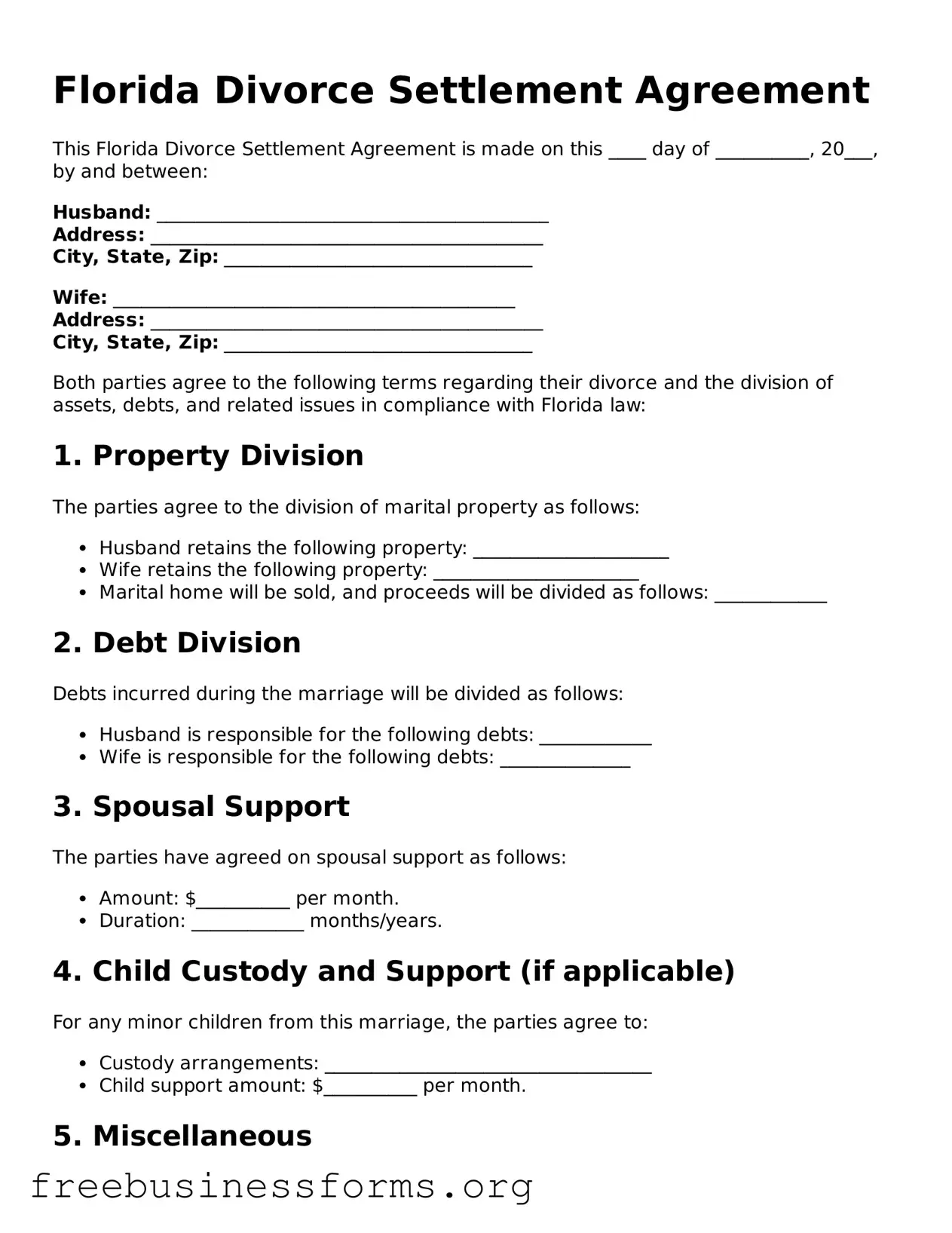Florida Divorce Settlement Agreement
This Florida Divorce Settlement Agreement is made on this ____ day of __________, 20___, by and between:
Husband: __________________________________________
Address: __________________________________________
City, State, Zip: _________________________________
Wife: ___________________________________________
Address: __________________________________________
City, State, Zip: _________________________________
Both parties agree to the following terms regarding their divorce and the division of assets, debts, and related issues in compliance with Florida law:
1. Property Division
The parties agree to the division of marital property as follows:
- Husband retains the following property: _____________________
- Wife retains the following property: ______________________
- Marital home will be sold, and proceeds will be divided as follows: ____________
2. Debt Division
Debts incurred during the marriage will be divided as follows:
- Husband is responsible for the following debts: ____________
- Wife is responsible for the following debts: ______________
3. Spousal Support
The parties have agreed on spousal support as follows:
- Amount: $__________ per month.
- Duration: ____________ months/years.
4. Child Custody and Support (if applicable)
For any minor children from this marriage, the parties agree to:
- Custody arrangements: ___________________________________
- Child support amount: $__________ per month.
5. Miscellaneous
This agreement constitutes the entire understanding between the parties. Amendments must be in writing and signed by both parties. The parties acknowledge they are entering this agreement voluntarily and agree to its terms.
IN WITNESS WHEREOF, the parties hereto have executed this Florida Divorce Settlement Agreement on the date first above written.
Husband’s Signature: ___________________________ Date: _______________
Wife’s Signature: _____________________________ Date: _______________
